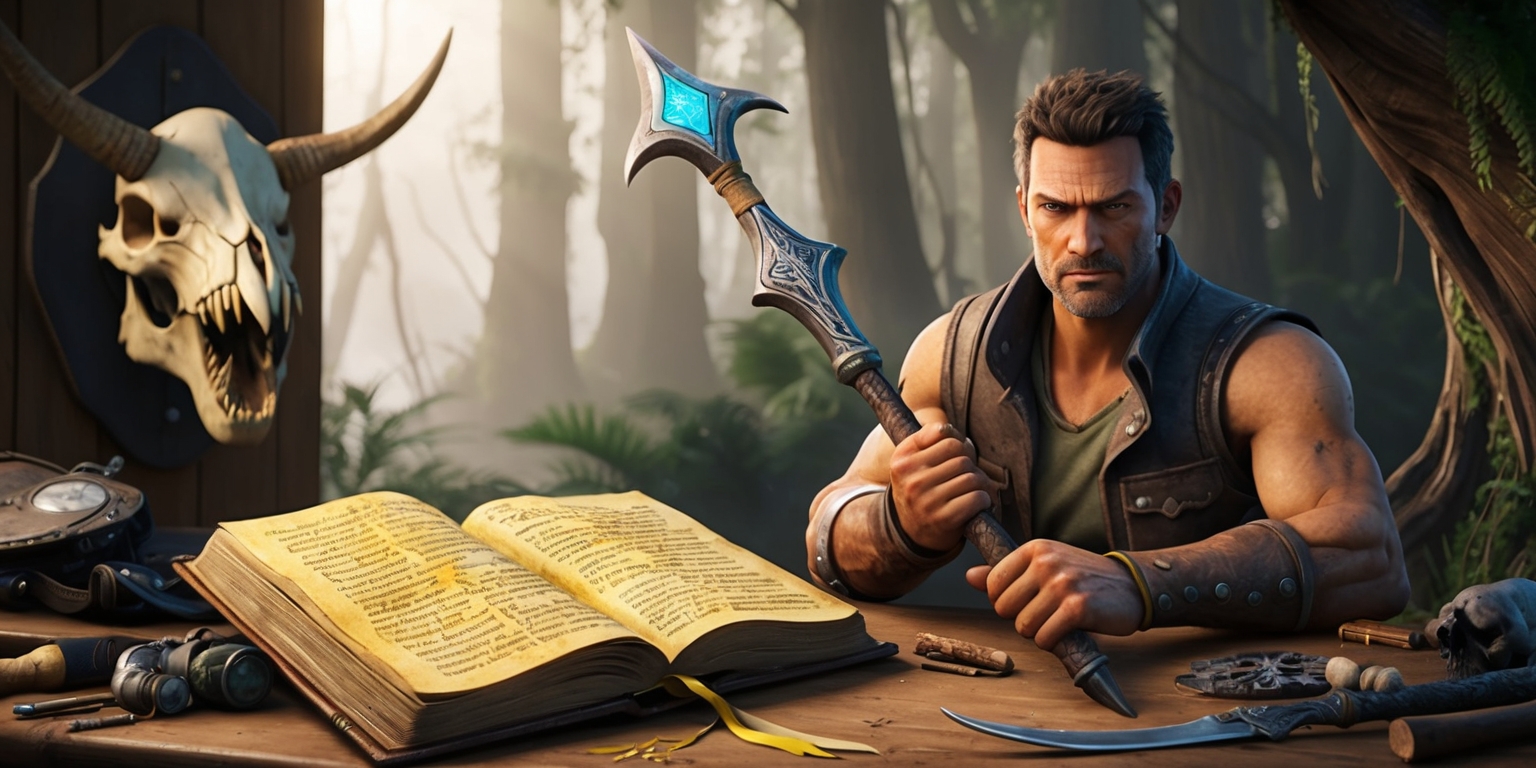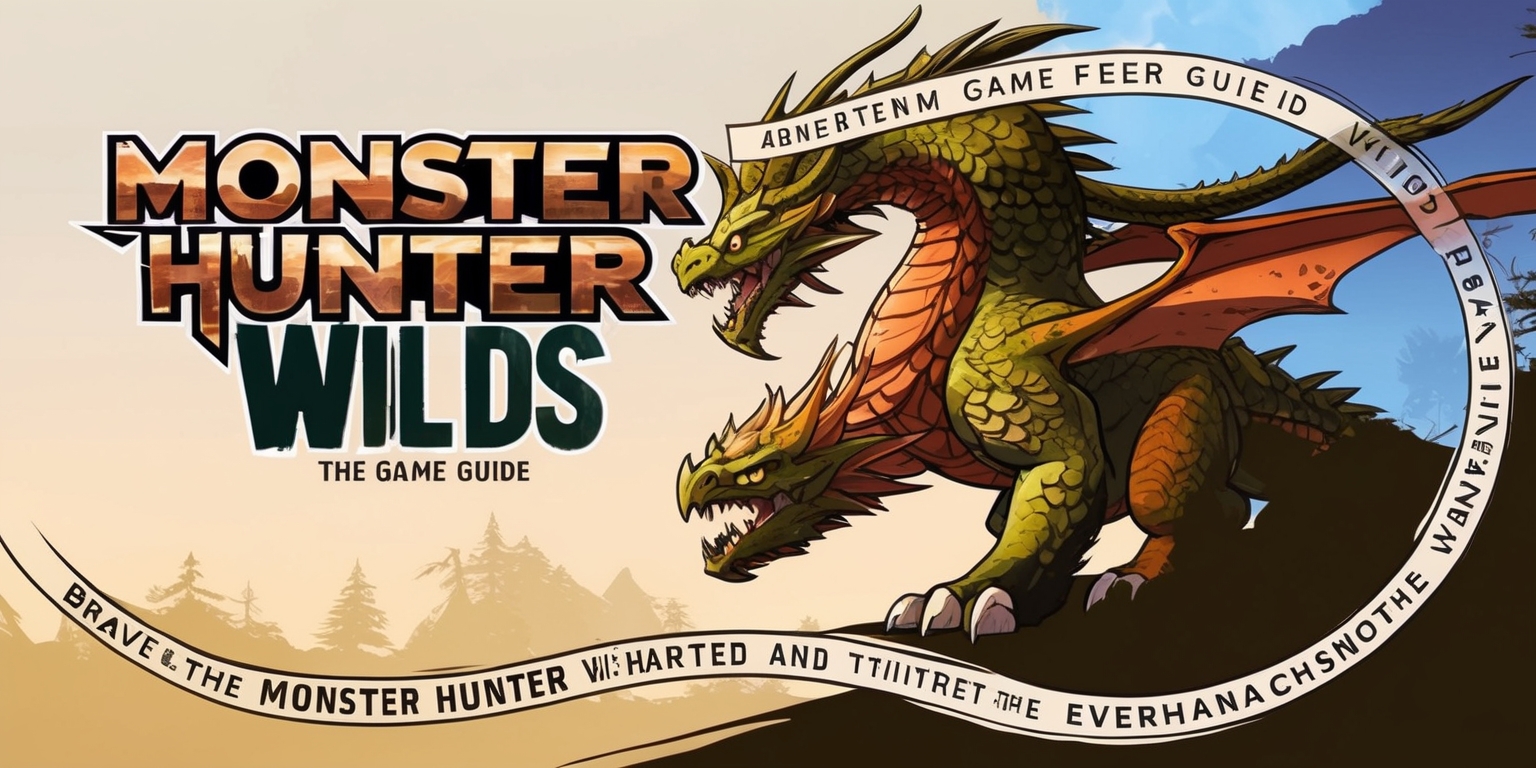Mastering the Venomous Foe: A Comprehensive Guide to Defeating Gypceros in Monster Hunter Wilds
- 2025-04-03 05:18:25

The expansive realm of Monster Hunter Wilds is filled with unforgettable challenges and monumental foes. Among them, the beast known as Gypceros stands out as a true test of skill and wit. Encountered only after reaching a crucial milestone in the narrative, this creature brings with it a distinct set of hazards that can overwhelm the unwary. The journey to confront Gypceros is as "largely involving a recognition of its inherent qualities." about honing one’s abilities, making it an essential part of the hunter’s growth. In Within this guide, you'll come across a diverse range of strategies—not only the specific tactics to exploit its frailties but also broader principles that ensure survival through its violent counterattacks.
Understanding the Challenge
Gypceros, a high rank monster, roams multiple regions in Monster Hunter Wilds, triggering encounters that mix exploration with heart-pounding combat. Its introduction in the game’s later chapters signals that the hunter is now ready to face much greater perils. Even though the creature appears to haunt several terrains, every encounter demands respect. Its every move, from the subtle flash of a poisonous attack to the violent swing of its tail, can end a hunt in an instant. Therefore, facing Gypceros requires not only powerful weapons and armor but also an intimate knowledge of its behavioral patterns.
The Intricate Nature of Gypceros

The Gypceros is not simply another monster to be dispatched. It represents a fusion of brute force, unexpected agility, and a host of toxic capabilities. As its habitat spans diverse regions such as Windward Plains, Oilwell Basin, Iceshard Cliffs, and Wyveria, each encounter may demand different approaches and adjustments. Understanding its lifecycle, movement, vulnerabilities, and preferred tactics is crucial for any hunter that wishes to emerge victorious. The animal’s integration into high rank challenges also hints at the intricate story progression, reinforcing that every new threat comes with layers of complexity.
Noticing the Telltale Signs
A vital component of the hunting experience Gypceros is recognizing the signals it sends before unleashing its most dangerous assaults. Its distinct behavior, such as a brightening crest and charging stance, serves as a warning for hunters. Noticing these early signs can buy precious seconds to reposition, guard against the flash attack, or even prepare a counter move. This attention to detail forms the backbone of survival tactics—observational skills combined with swift, decisive action.
Identifying Critical Vulnerable Spots
Central to any strategy is knowing the enemy’s weak points. For Gypceros, the head emerges as the most significant target. This is not merely an aesthetic choice; the head houses its primary arsenal of poisonous attacks. When a hunter targets this area, not only are they dealing with its most delicate structure, but they also risk triggering highly toxic counterattacks. This duality of high reward and high risk requires careful balance. Beyond the head, the tail also represents a secondary vulnerable point—especially when retracted and in a position less extended for defense. Understanding how to target these locations without leaving oneself exposed is essential in defeating this daunting enemy.
Mastering the Timed Assault on the Crest
Central to disabling the Gypceros’ deadliest move is the destabilization of its crest. This crest, prominently perched on its head, is responsible for the initiation of the notorious flash attack. When the crest begins to glow, it signals the gathering of energy that culminates in a devastating move. A well-timed assault on the crest can neutralize this attack altogether, preventing not only massive damage but also potential disorientation. However, such an assault is fraught with danger, as the crest "also functions as the central hub for the" creature’s poisonous emissions. The tactic therefore involves balancing speed, accuracy, and the inherent risk of exposing oneself momentarily during the attack.
Dancing with Poison Attacks
Gypceros’ reliance on toxicity is unmissable. The creature's mouth is the engine of myriad poison-based assaults. For the adept hunter, every spittle embodies a dual nature—it poses risks while opening doors to new possibilities—a weak point that can be exploited if one can survive the initial toxic burst. Keeping a vigilant watch on the movement of this poison can help in anticipating the next wave of attacks. Decisive dodges and rapid movement are essential as the hunter maneuvers to avoid these deadly sprays. Detailed observation of its patterns makes it possible to sidestep the poison while preparing a counter offensive.
The Perils of Poison Pools
A unique hazard of the Gypceros encounter is its ability to create pools of poison. Unlike many other enemies, these toxic puddles linger on the battlefield, creating areas that are hazardous to traverse. Stepping into these pools, whether by accident or due to the creature’s cunning attacks, can result in debilitating status effects. The key to managing these pools is to remain mobile at all times, ensuring that you avoid static positions that might inadvertently lead you into harm’s way. Positioning and continuous movement become critical strategies in managing this environmental hazard.
Navigating the Devastating Tail Assault
While much emphasis is placed on the head and its poisonous attacks, the tail of Gypceros is an equally lethal weapon. Often underestimated because it appears diminutive when retracted, its ability to rapidly extend and strike remains a significant threat. This tail attack is not only swift but also powerful. When it comes into play, distance is everything. The hunter must maintain an ever-present vigilance—an awareness that the creature’s entire body can transition from a dormant state to a lethal force in an instant. Repositioning continually ensures that the hunter is never caught off guard by a sudden tail assault.
Countering the Ground Peck Attack
In addition to its aerial and ranged assaults, Gypceros possesses a ground-based attack reminiscent of other agile adversaries. If a hunter gets too close to its vulnerable head area, the creature might strike at the ground in a blunt, sweeping motion designed to knock those nearby off their feet. Although this move is predictable, its timing can be deceptive, and its shock-wave impact swift. The best defense against such an attack is to keep a safe distance and remain in constant motion. This maneuver forces the hunter to adapt quickly, making it harder for the creature to capitalize on any misstep in close quarters.
Adapting To Different Terrains
Gypceros inhabits a wide array of landscapes, and Every region brings its distinct array of obstacles. In the Oilwell Basin, for example, the environment imposes the need for cooling items to guard against heat-related distractions and complications during the fight. Conversely, in the Iceshard Cliffs, keeping warm is paramount to avoid additional strains that might compromise agility and focus. In these varied conditions, the hunter must adapt not just their combat strategy but also their pre-combat preparations. Recognizing how the terrain influences both the behavior and the vulnerability of the beast is crucial for crafting an effective plan of attack.
Strategic Preparations for the Hunt
Preparation is the harbinger of success in every Monster Hunter Wilds challenge. Before embarking on the hunt for Gypceros, it is essential to equip both the character and the inventory with essential items tailored to counter the creature’s abilities and the current terrain. Stock up on antidotes, protective gear, and specialized tools that can assist in neutralizing poison exposures. Equally important is ensuring that the chosen armor and weapons allow for mobility, letting the hunter dodge swift attacks while mounting effective counterstrikes. A comprehensive preparation strategy will can often serve as the key factor that differentiates a splendid win from a crushing defeat humiliating defeat.
Utilizing Quest Creation to Streamline Hunting
One often overlooked tip for hunting creatures like Gypceros is the effective use of quest creation. By setting up a dedicated quest for tracking this monster, the game’s assistance tools—like location tracking—become invaluable. Your scoutflies, for example, will automatically guide you towards Gypceros by following its movement across regions. This not only simplifies the hunt but also minimizes the wasted time that might otherwise be spent endlessly searching for the target in a sprawling landscape. Crafting such quests and relying on in-game tools is a fundamental part of modern hunting strategies.
Playing the Long Game: Capture Versus Elimination
Deciding whether to capture or eliminate Gypceros is Among the more thoughtfully refined alternatives available to hunters. The decision should be informed by your current requirements and long-term goals. Sometimes, obtaining specific materials can only be achieved through harvesting parts of its body, while in other instances, capturing the monster might lead to rewards or opportunities for further study. Both approaches share their advantages and risks: capturing leaves you with a chance to reap benefits from temporarily subduing the creature without overly damaging it, whereas eliminating the threat can yield higher quantities of materials. Weigh your needs, resources, and overall strategy before committing to one path.
Flexibility in Approach: Adjusting Techniques Mid-Battle
Combat with Gypceros is rarely a static affair; as the battle progresses, the creature’s tactics evolve to exploit any momentary lapse in the hunter’s focus. Displaying flexibility in your approach is essential. For example, if an initial assault on the head fails or if you catch a glimpse of a new, emerging attack pattern, don’t hesitate to change tactics on the fly. The ability to be agile in decision-making is what differentiates a seasoned hunter from a novice. Continuous adaptation "not only enhances your likelihood of staying alive but" can also open new opportunities for significant damage.
Unforeseen Circumstances and Advanced Tactics
Every battle with Gypceros can unfold in unexpected ways, demanding advanced tactics from even the most experienced hunters. Some engagements might see the creature exhibiting behavior that deviates from the standard script. In those rare moments, experience, intuition, and quick thinking are of the essence. Developing advanced maneuvers—like feints, rapid dodges, or using the environment for cover—can provide you with the upper hand even when the odds appear stacked against you. Experiment with different approaches in practice settings to build a repertoire of responses for when the situation becomes dire.
Learning from Each Encounter
Confronting Gypceros is as much a training ground for personal skill improvement as it is a necessary step in the narrative. Every encounter provides valuable lessons—from the nuances of dodge timing to the intricacies of managing hazardous environments. Reflect on each battle, assessing what worked and what didn’t. This process of gradual refinement is essential for growth as a hunter, as every lesson learned can be the key to overcoming Anticipate upcoming hurdles and treat every trial as a chance for growth for improvement, ensuring that your tactics evolve over time.
Integrating Knowledge into Future Hunts
The skills honed during the confrontation with Gypceros extend far beyond this one encounter. The ability to recognize enemy patterns, identify weaknesses, and adjust to rapidly changing circumstances enhances overall gameplay and prepares hunters for even greater challenges. By integrating the tactics learned here into your broader strategy, future hunts against different monsters become less daunting and more manageable. The gradual accumulation of know-how through each battle is the essence of the hunter’s journey, reinforcing preparedness for all the monstrous trials that lie ahead.
Extra Measures for a Successful Expedition
In the world of Monster Hunter Wilds, success is not solely reliant on the immediate battle—it is also about forethought and holistic planning. Some general tips include ensuring you have ample recovery items, a well-stocked inventory, and backup plans when the terrain shifts unexpectedly. Furthermore, being aware of weather changes and the impact they might have on monster behavior can drastically influence the outcome of a hunt. Taking a moment before an encounter to assess all environmental factors can save lives and optimize your performance, setting the foundation for a successful expedition overall.
Final Thoughts on Tactful Monster Hunting
Conquering Gypceros involves more than just aggressive offense—it is the art of balanced combat. From understanding the creature’s biology and anticipating its venomous outbursts to deftly maneuvering in hazardous conditions, every tactic employed must be calculated and respectful of the beast’s inherent dangers. The evolving nature of Gypceros, combined with its varied attack patterns, demands a multifaceted approach. As you navigate through these encounters, remember that each successful hunt reinforces a cycle of learning and mastery, making you better equipped for the unpredictable challenges of Monster Hunter Wilds.
In conclusion, the journey to overcome the might of Gypceros is defined by strategic preparation, adaptable tactics, and a keen understanding of both the environment and enemy behavior. Whether you choose to subdue or capture this formidable adversary, the satisfaction derived from outsmarting such an elusive threat is a reward in and of itself. Embrace the lessons learned in every strike, every dodge, and every calculated counter—this is "the very core that encapsulates what it means to be a genuine hunter" in a wild, ever-changing world.





